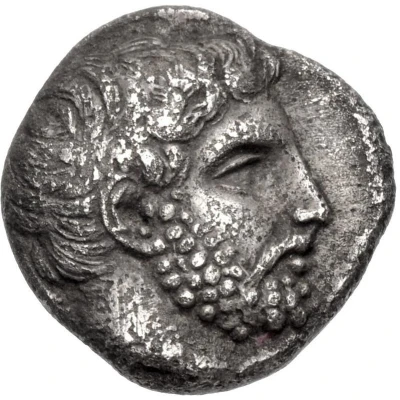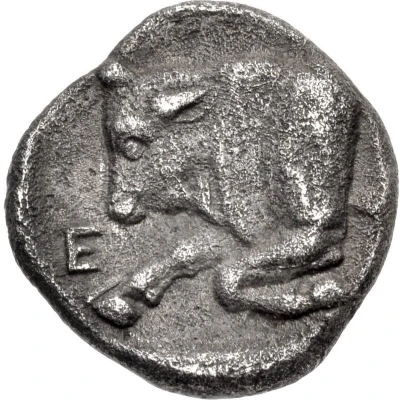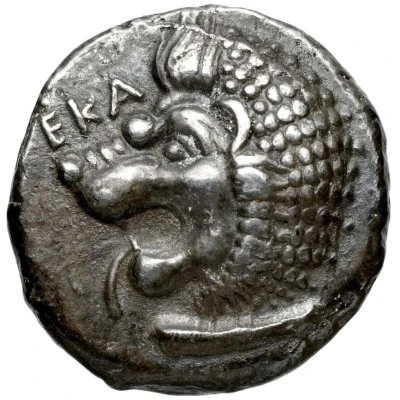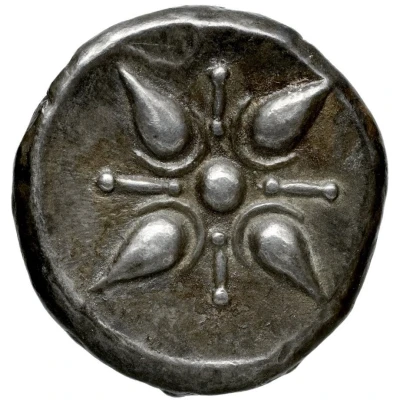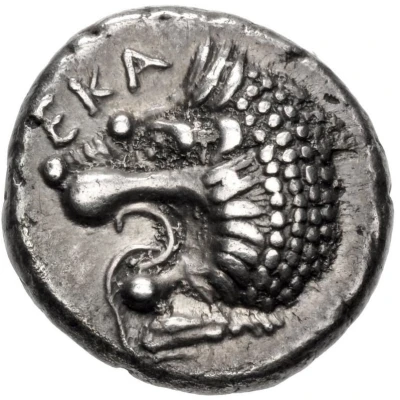
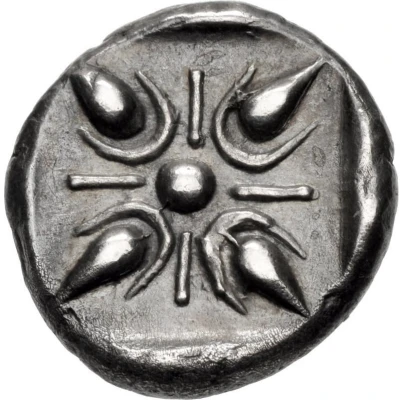

© Classical Numismatic Group, Inc.
Tetrobol - Hecatomnus Mylasa 392 BC - 377 BC
| Silver | 4.17 g | 15 mm |
| Issuer | Achaemenid Satrapy of Caria (Achaemenid Satrapies) |
|---|---|
| Satrap | Hecatomnus (395 BC - 377 BC) |
| Type | Standard circulation coin |
| Years | 392 BC - 377 BC |
| Value | Tetrobol (⅔) |
| Currency | Drachm (550-330 BCE) |
| Composition | Silver |
| Weight | 4.17 g |
| Diameter | 15 mm |
| Shape | Round (irregular) |
| Technique | Hammered, Incuse |
| Orientation | Variable alignment ↺ |
| Demonetized | Yes |
| Updated | 2024-10-10 |
| Numista | N#423123 |
|---|---|
| Rarity index | 100% |
Reverse
Stellate pattern of Milesian type in square incuse.
Comment
Konuk, Identities 11.
Interesting fact
One interesting fact about the Tetrobol coin is that it features a unique blend of ancient Greek and Persian design elements. The obverse side of the coin depicts a bearded Persian king, believed to be Hecatomnus, while the reverse side features a traditional Greek symbol, the owl, surrounded by a Persian-style border. This fusion of design styles reflects the cultural exchange and influence that occurred during the Achaemenid Empire's rule over Caria.
Price
| Date | Mintage | VG | F | VF | XF | AU | UNC |
|---|---|---|---|---|---|---|---|
| ND (392 BC - 377 BC) | - | - | - | - | - | - |
Values in the table are based on evaluations by sales realized on Internet platforms. They serve as an indication only for Tetrobol - Hecatomnus (Mylasa) (392 BC - 377 BC) coin.
